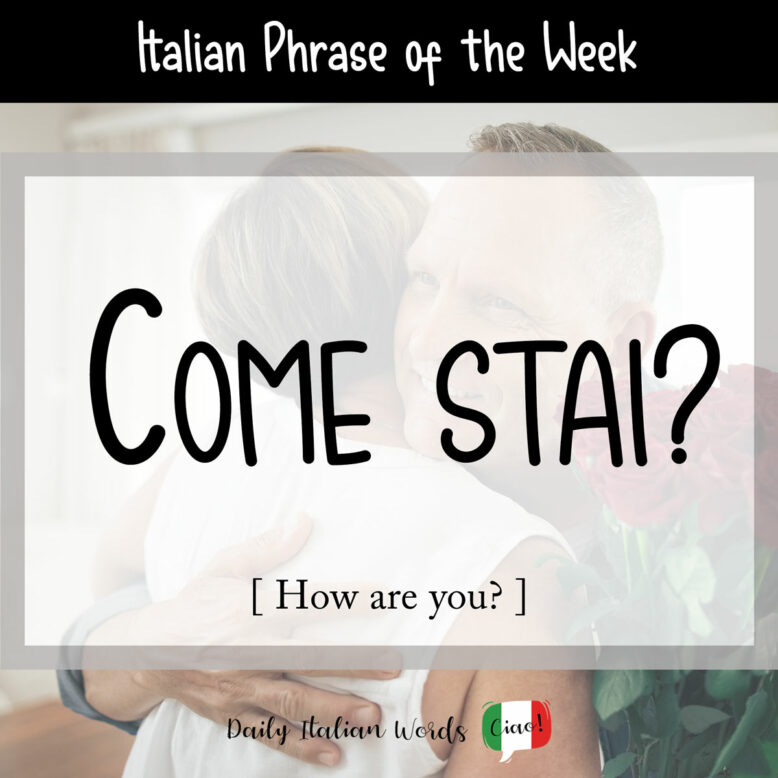There are many ways to ask a person how he or she is in Italian. Unlike English, there are variations depending on your relationship with the person, or if you’re asking a single person versus a group of people.
Come stai?
One of the most common phrases is Come stai? where come means how and stai is the second person singular of the verb stare. The latter means to stay but in this case it takes on the same meaning as the English verb to be.
The conjugation of the verb stare changes depending on the person you are addressing:
- Come stai? (second person singular): to a friend, family member or acquaintance you know well enough
- Come sta? (second person singular, formal): to a doctor, policeman, judge or client for example
- Come state? (second person plural): to a group of people

Come va?
Another way of asking the same question is Come va which means How’s it going. It’s not a formal way of asking so you wouldn’t use it with someone you’ve just met for the first time or a client. It’s common among friends and acquaintances. Come va is less direct and personal than Come stai. Another variation is Come vanno le cose (how are things).

Among friends, you can take the slang approach and say: come butta or come ti/vi butta where butta is the third person singular of the verb buttare (to throw). Or you can simply say allora…? which is a way of urging the other person to tell you how he or she is without directly asking the question.
If you know the person well, regardless of whether he/she is a friend or a client, you can be more specific as an act of politeness or to show interest:
- Come va il lavoro? = How’s work?
- Come sta la famiglia? = How’s the family?
Or you can skip the verbs and go with the following expressions:
- Tutto bene? = Everything ok?
- Tutto a posto? = Everything in order?
It’s common to mix and match different versions, especially if you’re happy to see the person.
Ciao ragazzi, come state, tutto bene?
Hey guys, how are you, everything ok?
Ciao Manuela, come stai? E il lavoro come va?
Hi Manual, how are you? And how’s work going?
Buongiorno avvocato, come sta? E la famiglia? Tutto a posto spero!
Good day lawyer*, how are you? And the family? Everything’s ok I hope!
*Note: in Italian, it is common practice to call people by their profession, if the profession is highly ranked in society: dottore (doctor), avvocato (lawyer), ingegnere (engineer), commissario (police commissioner). You wouldn’t do this for jobs with a lower ranking. For example, you wouldn’t call an electrician elettricista or a worker operaio.
We’ll explore other greetings in a separate article, as well as how to respond to these greetings, but here is a few extra phrases in the meantime:
Ciao Carlo, come stai? – Sto bene grazie, e tu? – Anch’io tutto bene, grazie!
Hi Carlo, how are you? – I’m good thanks, and you? – I’m also fine, thanks!
Allora? Come butta Antonio? Tutto a posto? – Ciao Pino! Ma si dai, non c’è male.
So? How are you, Antonio? Everything ok? – Hi Pino! Yeah, things aren’t bad.
Buonasera direttore, come sta? – Bene grazie, e Lei? – Tutto bene grazie, un po’ accaldato con queste temperature! – Lo so, ormai l’estate è alle porte!
Good evening director, how are you? – Fine thanks, and you? – Everything fine, thank you, a bit hot with these temperatures! – I know, summer is nearly upon us!
Mathieu Gasquet was born and raised in Turin in the north of Italy to an Italian mother and a French father. He provides the audio pronunciation for Daily Italian Words.


